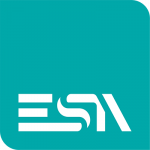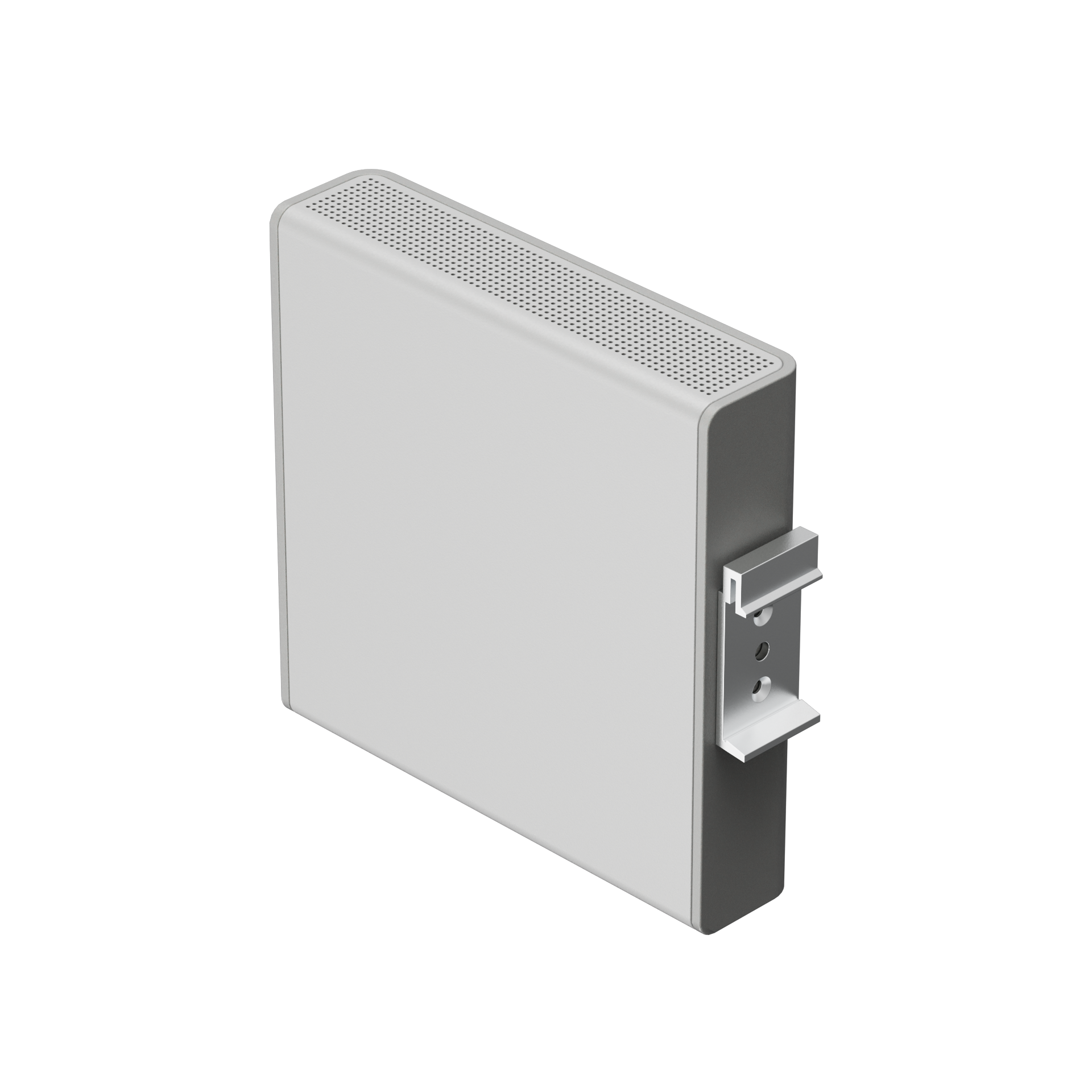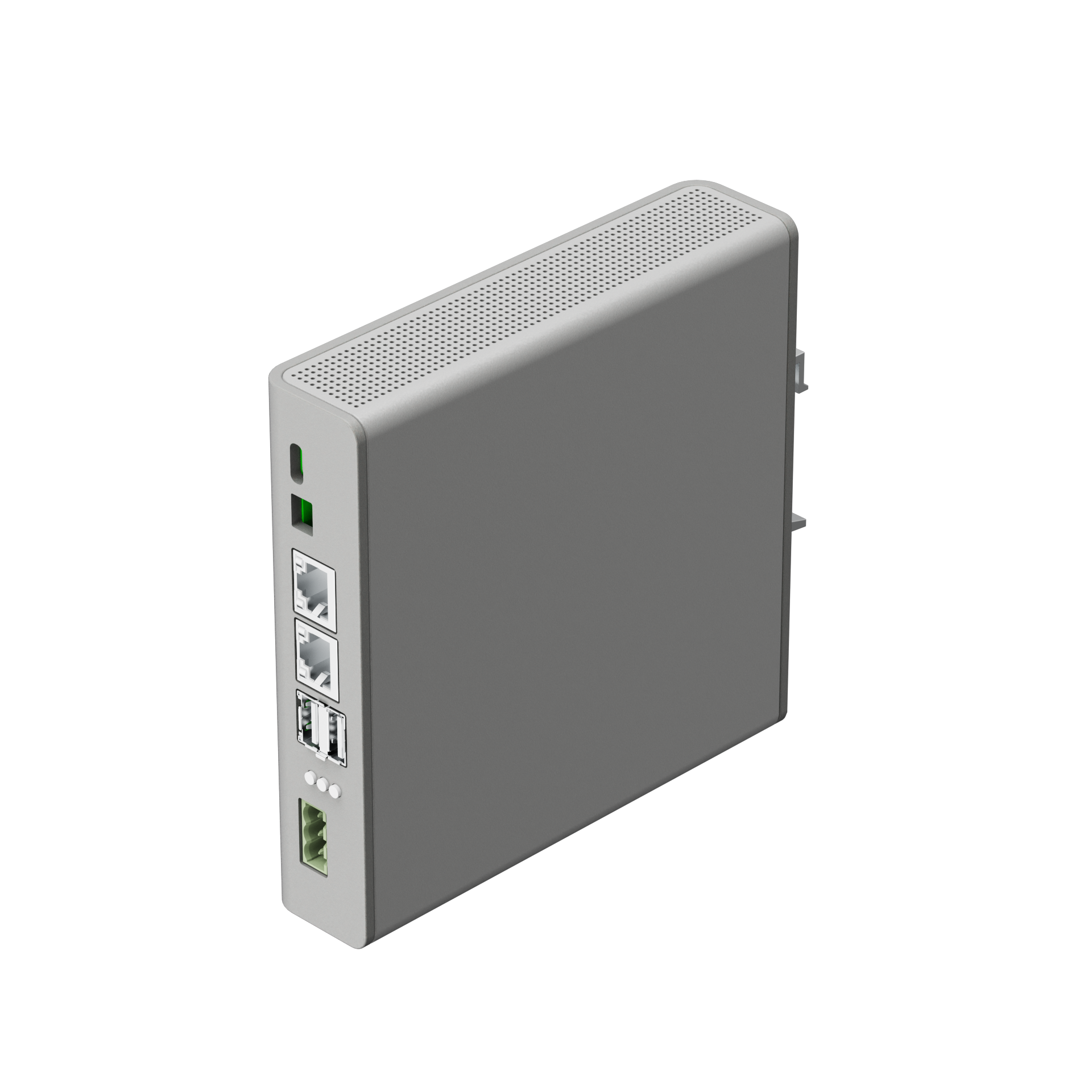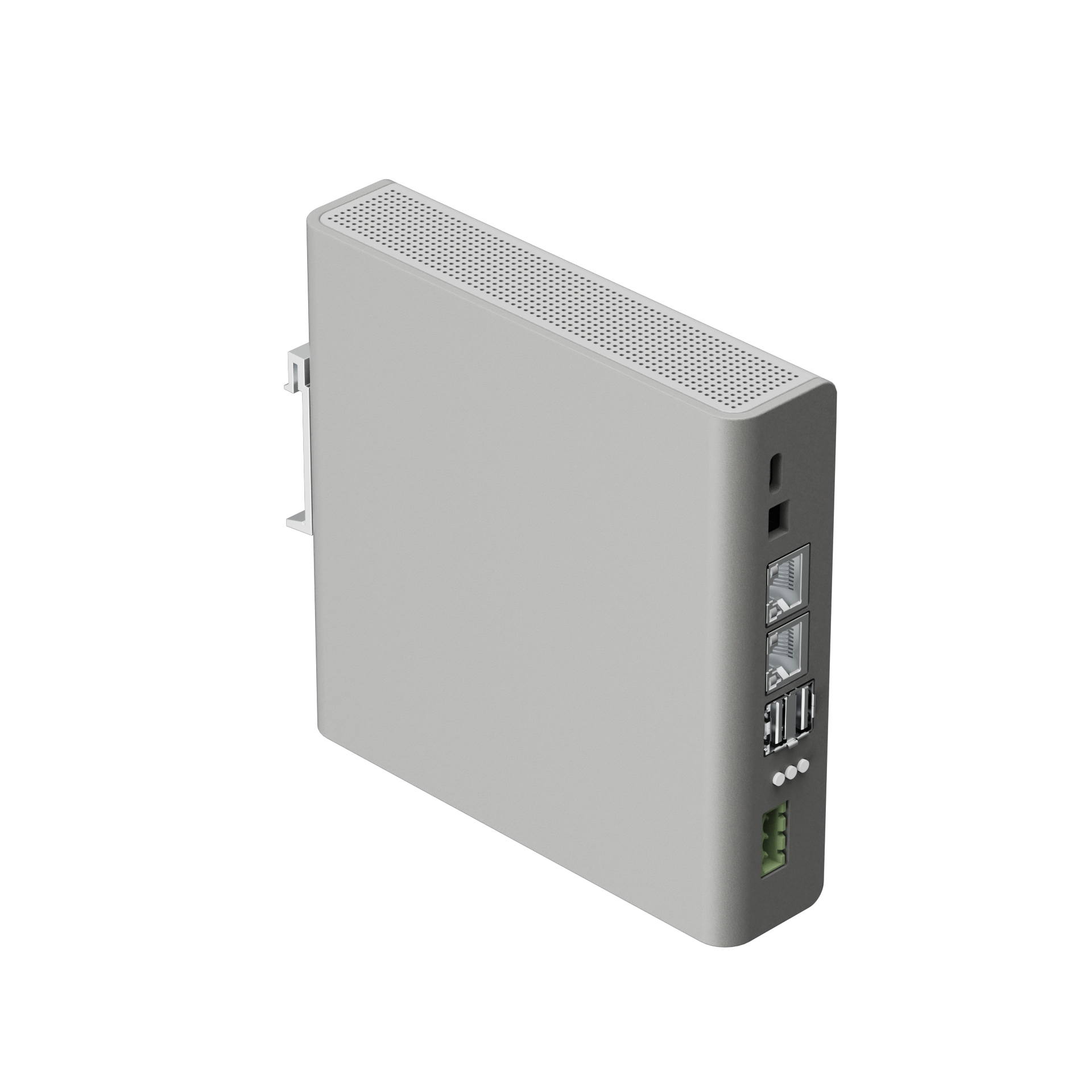- Raspbian operating system
- Processor fanless 4 core Cortex A72
- Integrated Wifi client ed hotspot (2,5 GHz – 5 GHz)
- 2 x LAN ports
- 2 x USB ports (2.0 and 3.0)
- RAM 2GB
- Internal memory 16GB
- DIN rail mounting
- Codesys runtime 3.5
- Library dedicated to motion control ESA MC
- Ethercat, Profinet, Ethernet Ip, Modbus TCP fieldbuses
LUMIA PLCmodulare Lösung
LUMIA1BOX ist das neue kompakte Produkt der ESA, das alle Funktionen integriert, die notwendig sind, um eine Maschine zu steuern. In Kombination mit einem edgeHMI der LUMIA-Serie ermöglicht es zudem die Entwicklung einer vollständig webbasierten Anwendung gemäß dem Industrie-4.0-Standard.
Was Sie mit einer Lumia1box tun können:
Die Maschine vollständig zyklisch mit einer Anwendung steuern, die dem Standard IEC 61131 entspricht.
Die Entwicklungsumgebung Codesys 3.5 nutzen, die zum de facto Marktstandard geworden ist.
Die verschiedenen Achsen gemäß PLC Open Teil 1 und Teil 2 mit der ESA Motion Control Library verwalten.
Ferngeräte über verschiedene leistungsstarke Feldbusse (Ethercat, Profinet, Ethernet Ip, Modbus TCP) verbinden.
Die Programmierung der Betriebsparameter ist äußerst einfach über die ESA Control Panel Webanwendung, die mit einem einfachen HTML5-Browser verwaltet werden kann.
LUMIA PLC
| LUMIA1BOX | |
|---|---|
| O.S. | Raspbian Linux |
| Application software | Codesys IEC 61131 |
| Real time Fieldbus | Ethercat |
| Bezel / Chassis | Alluminium |
| Processor - HMI | Quad-core Cortex A72 (ARM v8) |
| 64-bit SoC @ 1.5 GHz | |
| RAM | 2G DDR4 |
| Mass storage | 8GB eMMC |
| Ethernet Port | 1*1Gb+1*100Mb |
| Wifi | 2,5 / 5 GHz (client & hotspot) |
| USB Port | 1xUSB3.0 + 1xUSB2.0 |
| Power Supply (Vdc) | 24 (12 32)V DC Class 2 |
| Consumption (W) | 6 W |
| Operating Temperature (°C) | 0 + 50 °C |
| Storage Temperature (°C) | -20 + 60 °C |
| Humidity | <90% (non condensing) |
| External dimensions(W/H/D) (mm) | |
| 30/145/140 | |
| Weight (kg) | 2,5 kg |
| Protection degree | IP20 |
| Certifications | CE - RED (2014/53/EU): |
| Safety: EN 62368-1:2018, | |
| EN 62311:2008 | |
| EMC: ETSI EN 301 489-1 V2.2.3:2019 | |
| ETSI EN 301 489-17 V3.1.1: 2017 | |
| Radio: ETSI EN 300 328 V2.2.2:2019, EN 301 893 V2.1.1:2017 | |
| UL |



